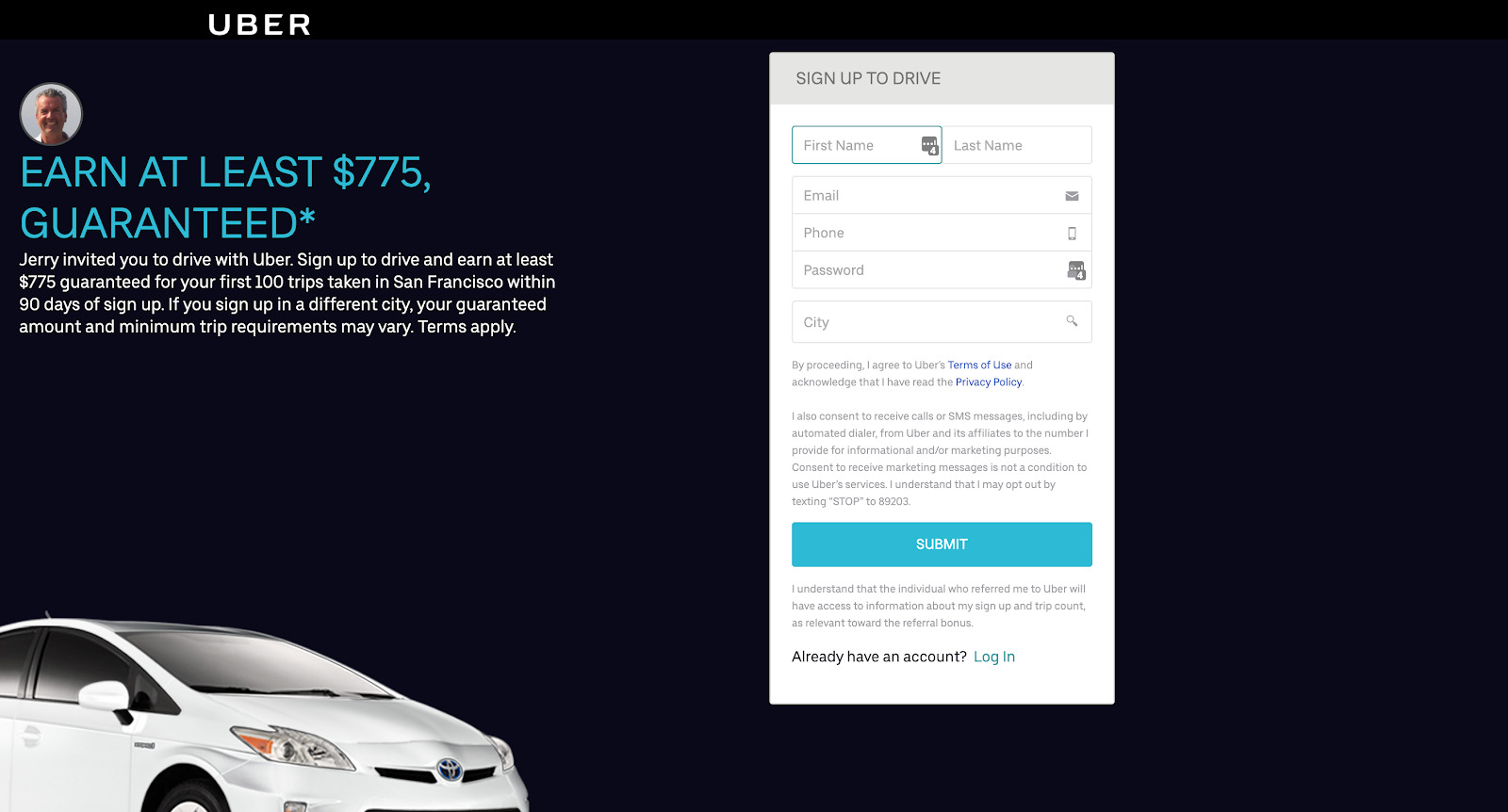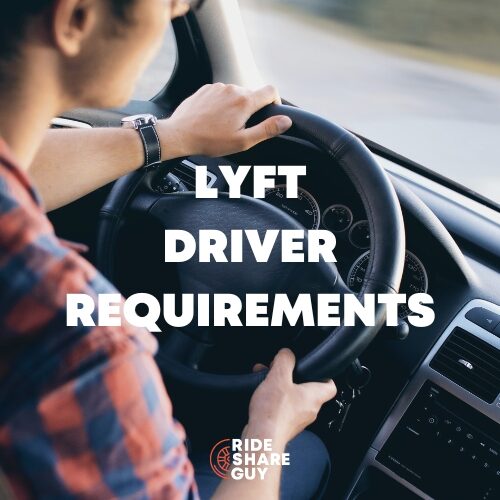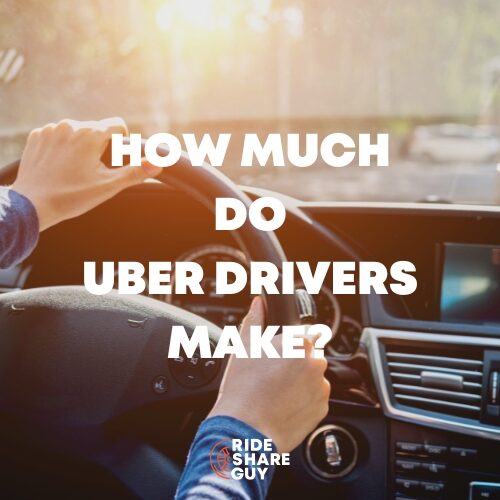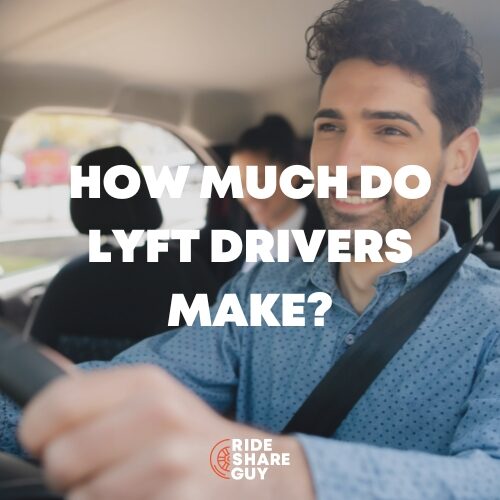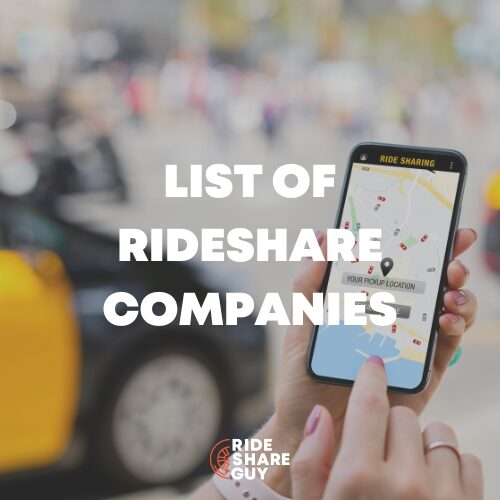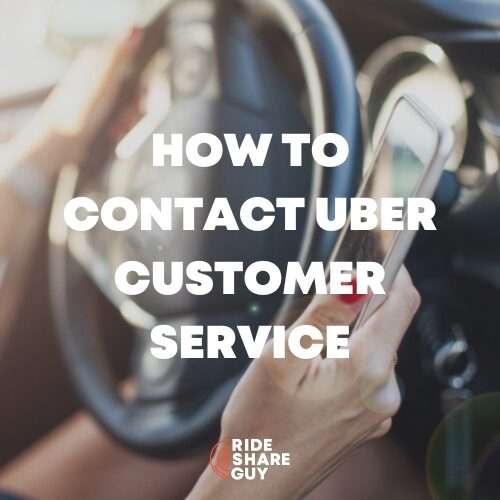Over the years, Uber and Lyft have changed up their bonus and guarantee programs and terms so frequently, it can be tough to keep track of all of them. But have these changes improved driver pay at all? Senior RSG contributor Jay Cradeur outlines the state of Uber and Lyft bonuses in 2019.
Recently, I listened to the Rideshare Guy Podcast interview with Lyft’s COO (Chief Operating Officer), which I had some issues with.
The overarching message was that drivers should not care about how much they are being paid. Instead, we should focus on reducing our expenses to increase our bottom line profit or take-home pay.
Well, it does not take a rocket scientist to understand there are two ways to increase the bottom line: increase revenue and decrease expenses.
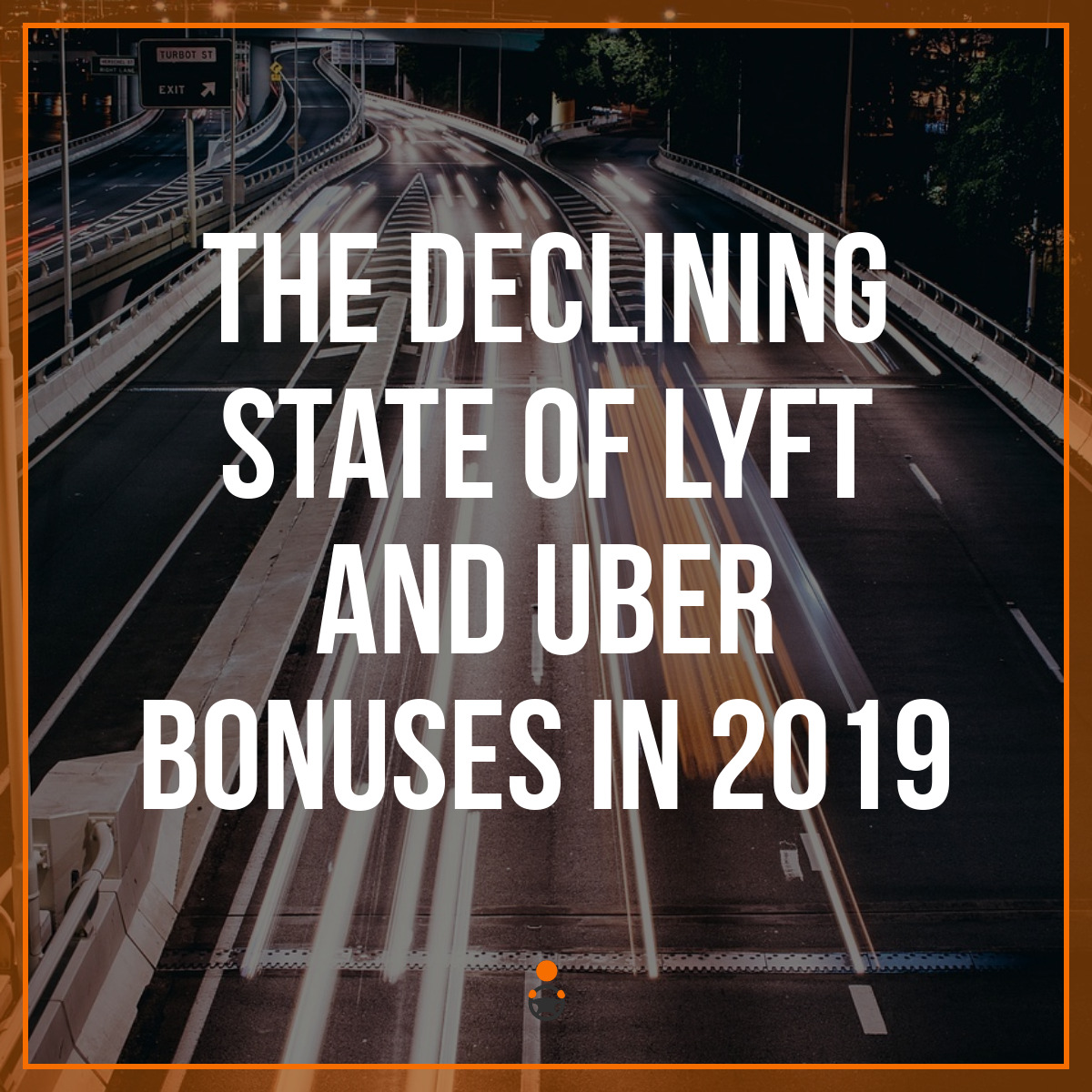
Assuming we are all profit-oriented, we are keenly aware of how to keep our expenses down. We know where to get the cheapest gas, and we’ve evaluated and selected the best automobile for our needs. We have chosen the least expensive yet sufficient rideshare insurance for our protection. In addition, we handle our repairs and maintenance during our off hours and keep customer gifts to a minimum.
The biggest expense I have, which I don’t have any control over, is the fat 25% to 50% (and growing) fee I kick out to Uber and Lyft on each ride. Another item we don’t have any control over is how much we are paid. The per mile rate, the per minute rate, and the base rate are all determined by Uber and Lyft. We have seen the recent pay cuts in virtually all markets.
Lyft COO Jon McNeill says the market determines the rates that passengers pay. Well, the market did not decide to reduce the amount of pay for each driver – Lyft did!
But let’s not single out Lyft here, since Uber is also guilty of cutting rates for drivers and some may even argue that Uber is the leader in this department. And this reduction in rates obviously has a very definite and negative impact on the bottom line of which Lyft’s COO seems to have so much concern.
This article will look at one more revenue stream for which driver pay has been decimated in the past three years: bonuses.
Referral Bonuses
Every market has different bonuses and the big cities tend to have better offers and more options but the thinking below applies no matter what city you are in. Since I live and work in San Francisco though, the figures I share are my figures in the San Francisco market. Let’s look at what both Uber and Lyft offer to new drivers in San Francisco.
Uber’s Referral Bonus Offer
This is not a true bonus anymore like it used to be. This is an Uber earnings guarantee. If you start driving for Uber and complete 100 rides and earn less than $775, you will be awarded the difference as a bonus. If however, you earn $775 or more, you will not get any additional bonus.
Basically, you are guaranteed to earn an average of $7.75 for each trip. If you happen to be the driver who made the referral, this offer is far more attractive. In this case in San Francisco, I have the opportunity to earn a $700 bonus when my referral completes 100 rides.
That is a nice bonus. However, it is hard to get. I have had two referrals in the past 3 months disappear from my app. I have received an email from Uber verifying the referral. Then the referral is gone.
Uber says they can’t help me to understand why this has happened unless I provide my referral’s name, phone number, and email. Since I don’t have those, I am out of luck.
You can sign up for Uber using our referral link.
Lyft Referral Bonus Offer – AKA Guaranteed Earnings

This is another guarantee. The new driver must complete a whopping 520 trips in order to meet the requirements. That means Lyft is guaranteeing approximately $8.50 per trip. It is slightly more than Uber, but the new driver must do 5X the trips! The payout for the referring driver is very small by comparison to Uber: $300.
What we are seeing here is the switch from pure bonuses in the past to guarantees. Both Uber and Lyft are reducing their payouts by offering guarantees. Potential drivers see a big dollar figure and may decide to go for it.
Often, as I have experienced, those drivers are mighty upset when they hit their number and don’t get any bonus. Unfortunately, these drivers often quit out of disgust.
You can sign up and get started driving with Lyft here.
Driving Bonuses – Uber Quest and Lyft Weekly Ride Challenge
In 2016, I was able to drive for Uber, hit 120 rides, and earn a clean $500 bonus. This lasted for approximately 9 months. At the same time, Lyft offered a bonus in which you would earn 20% of your earnings as a bonus for hitting roughly the same number of rides. One week, I drove hard and reached 270 trips and earned a combined bonus of over $900.
Sadly, those days are gone. These are today’s offerings.
Uber – Quest
This bonus changes each week. We are all fodder for Uber’s mysterious algorithms, which are designed to pay just enough to keep us loyal. Any more and we may be happy. Any less and we may decide to drive more for a competitor.
My bonus for the week below was a Fair Car Rental bonus. 70 trips earn me $185 and 120 trips earn me $305. While this is not the $500 I earned per week in 2016, it is still a decent bonus. You should note though that Fair recently increased the trip threshold from 70 trips to 90 trips to get the $185 bonus.
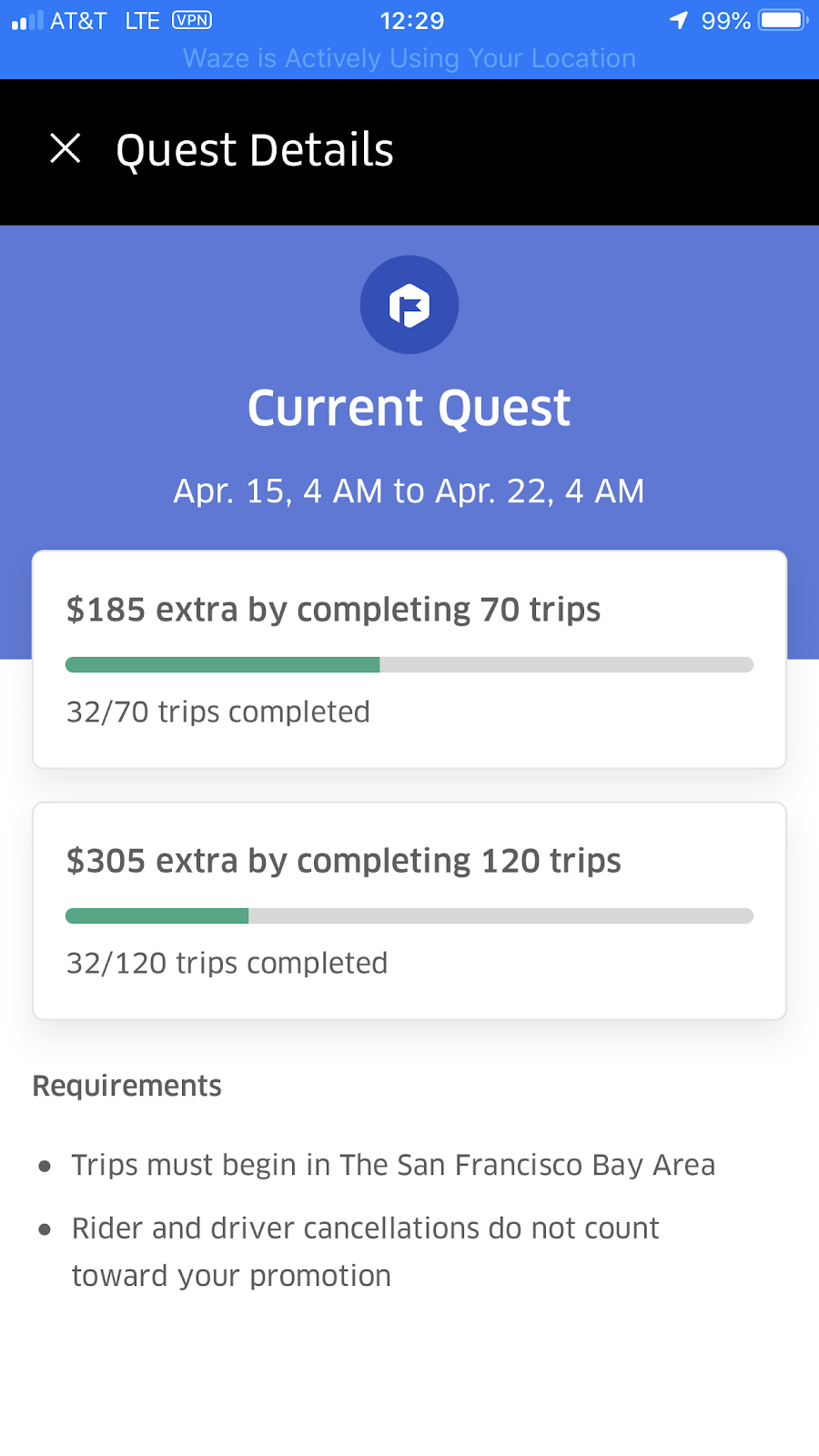
However, now that I have returned my Fair car, a new Quest bonus has been offered to me, which is significantly less than the Fair Quest Bonus.
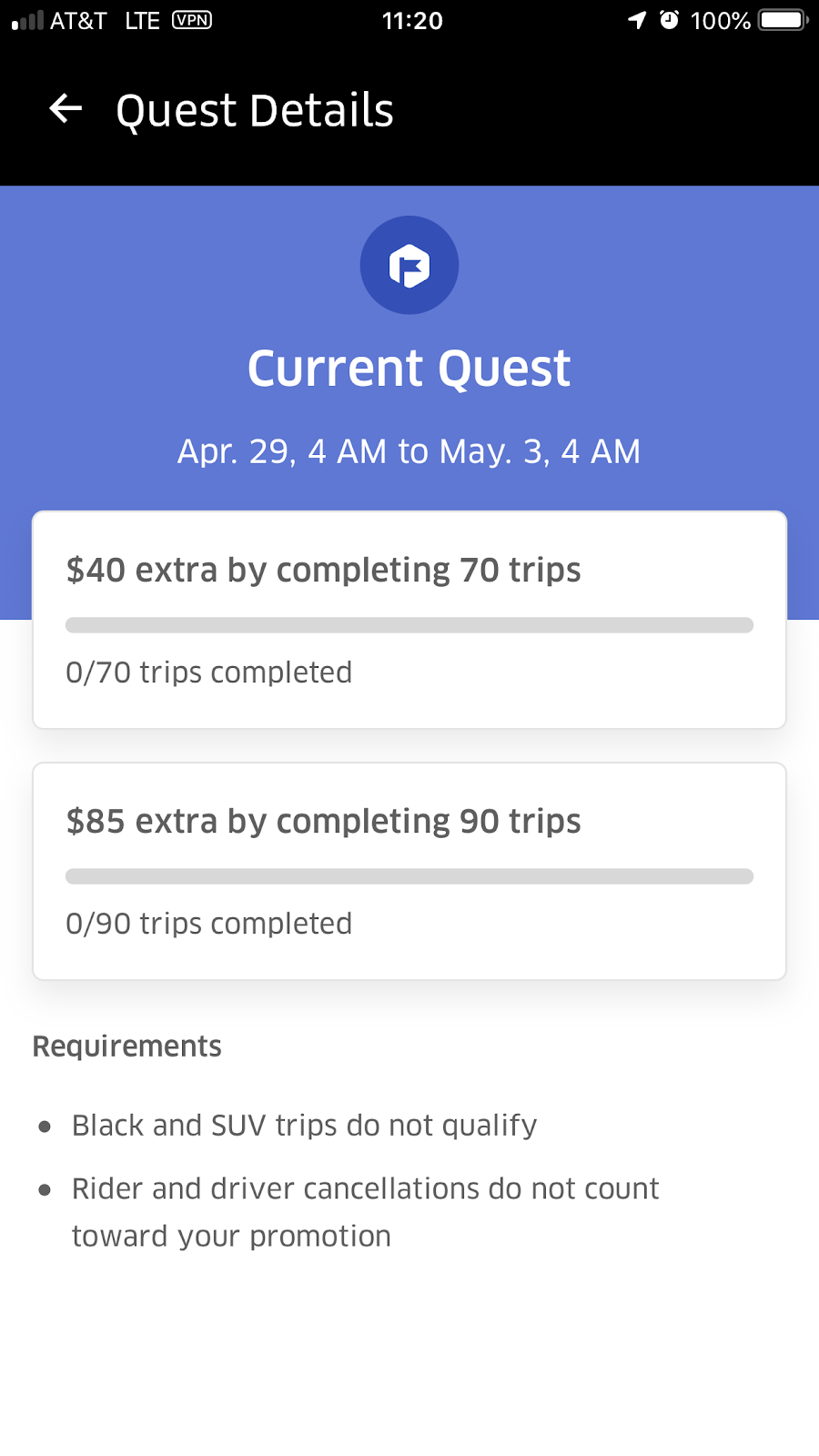
Instead of earning $185 for 70 trips, my current Quest bonus offers $40 for those same 70 trips, a decrease of $135 per week. That is a rather substantial drop in value!
Lyft – Ride Challenge
This is virtually the same type of bonus. Drive the required number of trips, any time of the day or night, and earn the bonus. While Uber’s bonus is broken into two tiers, Lyft’s is broken into three.
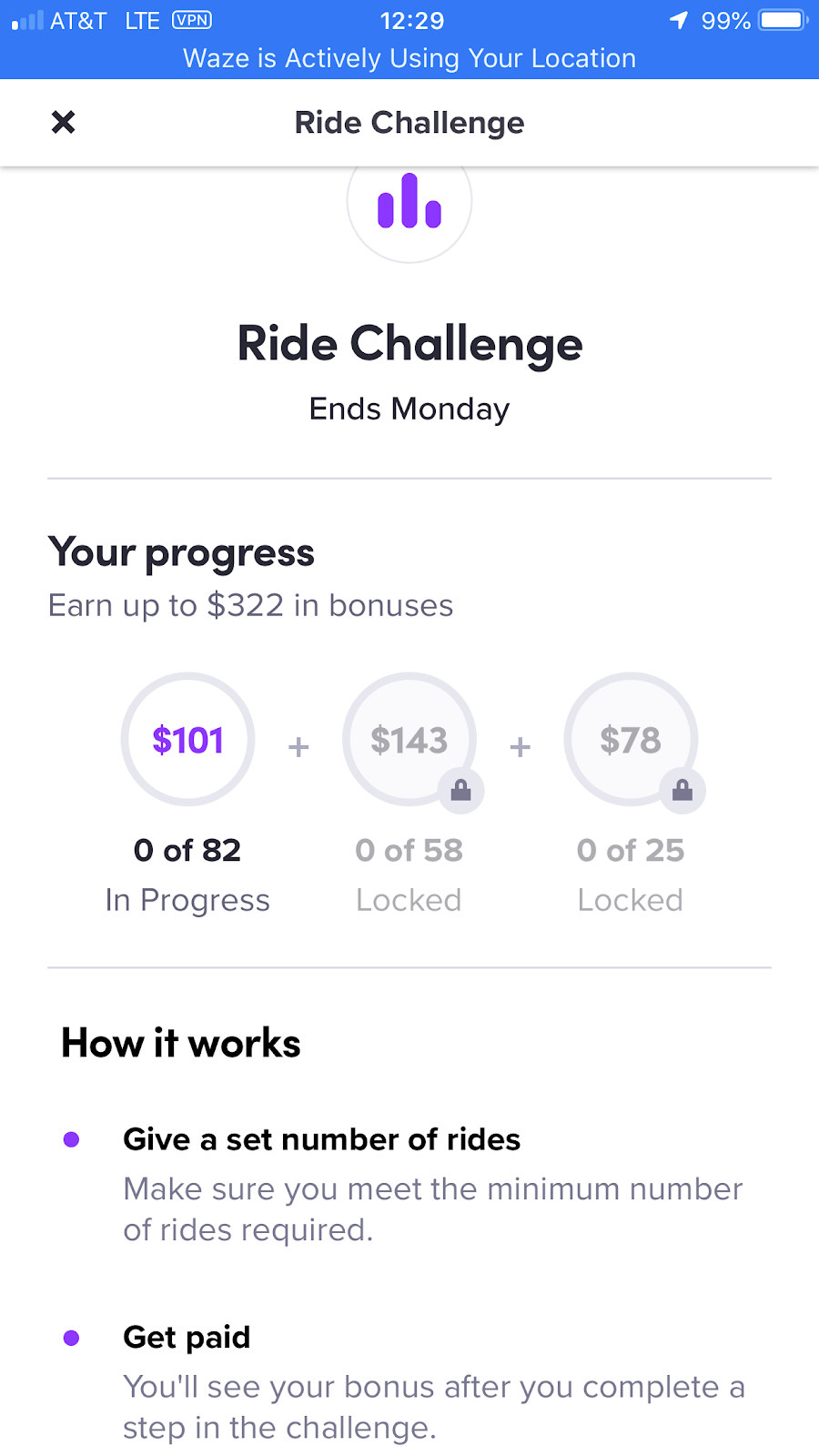
The Lyft bonus pays less per ride. With Uber, I can earn $2.50 per ride. With Lyft, I can earn $2.05 per ride.
Also, Uber makes if far easier to earn a significant bonus at 70 rides with a payout of $185. With Lyft, 82 rides only payout at $101. This is one of the main reasons I have been driving for Uber these past two months.
High Demand Bonuses: Flat Rate Surge (Uber) and Personal Power Zones (Lyft)
Here is another bonus in which we see Uber and Lyft’s belligerent attempts to convince us, the drivers, they are doing something for our benefit when in fact it is for their benefit. For those of you who are new, in the olden days (last year), when the demand for cars was high, both Uber and Lyft offered a bonus, which was a multiple of your fare.
For example, Uber might offer you 1.5X, which meant your earnings would be increased by 50%. Lyft would offer you 50%, which would do the same. It would always be very exciting to be in a high multiplier area and anticipate a long ride to the airport. But alas, those days are over. The thrill is gone.
Uber – Flat Rate Surge
Both Uber and Lyft have shifted over to “flat rate surge.” Instead of a multiplier, you are paid a guaranteed dollar figure. It looks like this:

It doesn’t really get you too excited, does it? It doesn’t get your blood pumping? I bet you aren’t thinking about crushing it on a long trip to San Jose?
No, instead we drive into an area and earn an extra $3.75. Instead of a long ride, we now want a short ride. Your job now is to get as many of these little bonuses as possible and stay in the zone.
Lyft – Personal Power Zones
Up until recently, Lyft resisted the flat rate surge phenomenon in San Francisco. However, recently, as predicted, Lyft followed Uber’s lead. Gone is Prime Time. Say ‘hello’ to Lyft Personal Power Zones.

I don’t like Penny Surge or Power Zones. Can anyone get too excited about earning an extra $2.58? It takes all the fun out of high demand.
And given Uber and Lyft’s well-deserved reputation to pay drivers as little as possible, I am sure we drivers are earning just a little bit less as a result of these changes. I don’t know any drivers who are happy about the new programs.
Other Bonuses
You may be in a situation in which you are offered another type of bonus, such as a Consecutive Trip Bonus. Some drivers are offered these bonuses. Others are not. It is all a part of the algorithms that determine who gets the good bonuses and who does not.
If you are getting an additional bonus, I suggest you pounce on it, earn as much as you can, and fully expect that it will go away before you know it.
Summary
Do I sound pessimistic? Does it seem that I think Uber and Lyft are out to screw the drivers? Well, if we look at what we, the drivers, had just a year ago and compare it to where we are now, what other conclusion can we reach?
While standard rates have been cut in most markets, most noticeably and recently in Los Angeles, we can see there has also been a slow bleeding of our bonus revenue.
The COO of Lyft can try to tell me that I don’t know how to run a business and I need his help to get my oil changed, but I disagree. I have got the expense side handled. What you could do for me, Jon, is stop cutting my pay!
We have known for a long time that we the drivers are Uber and Lyft’s biggest expense and these types of maneuvers are to be expected. Roll with it. Proceed with Plan B. The sun is still shining. You all go out and have a great day. Be safe out there.
Readers, what do you think of Jay’s analysis of the state of bonuses in 2019? Do you think they’ve gotten better or worse?
-Jay @ RSG
